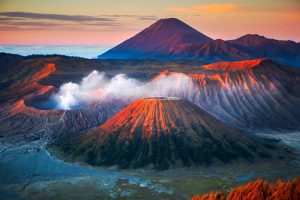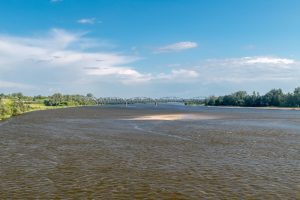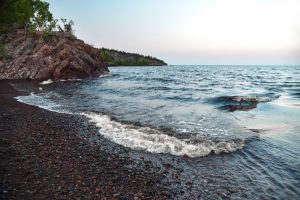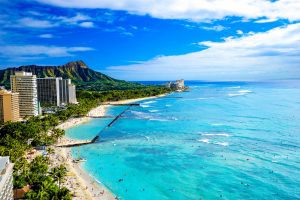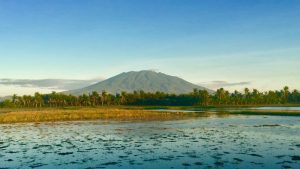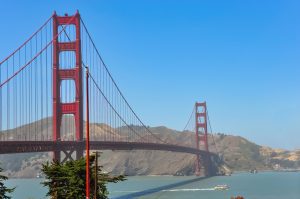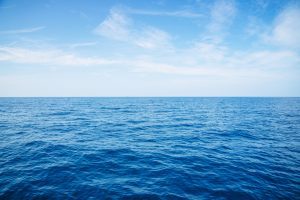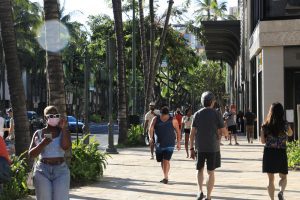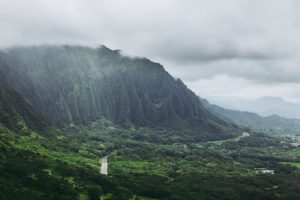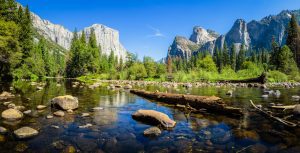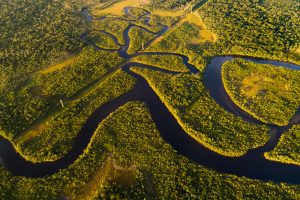The Big Island of Hawaii is home to the world’s largest volcano, Mauna Loa. Many lava flows have combined to form this huge shield volcano.
More than 17,000 meters (56,000 feet) of volcanic lava can be seen from the bottom to the summit of the stack.
Mauna Loa is the tallest mountain in the world when viewed from the ocean’s floor, with a height of more than 9,000 meters.
To support the weight of Mauna Loa, the oceanic crust under the volcano has been pushed many kilometers into the mantle by its weight.
Table of Contents
Where is Mauna Loa located?
Located in the Hawaii Volcanoes National Park, Mauna Loa, the world’s largest volcano, is situated in the south-central part of the island of Hawaii.
Mount Mauna Loa, which means “Long Mountain” in Hawaiian, is among the world’s largest single mountain formations and covers 50 percent of the island’s total area.
This makes it higher than Mount Everest in terms of absolute height.
Is Mauna Loa still active?
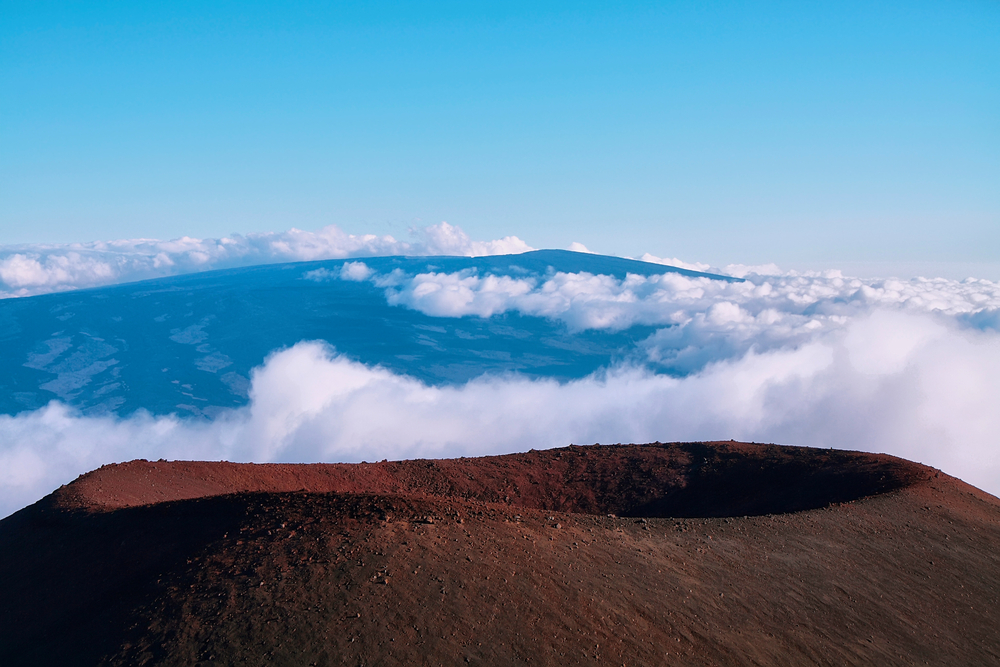
One of the planet’s most active volcanoes, Mauna Loa, has erupted 33 times since its discovery in 1843.
Since 2004, Mauna Loa has shown rising signals of a potential awakening on the not-too-distant horizon. Its last explosion was in 1984.
When was the first eruption of Mt. Mauna Loa?
During the mid-19th century, Mauna Loa had its first recorded eruption. Since that eruption in 1843, the volcano has erupted at least twelve times.
Mauna Loa has generated lava flows on an average of every six years for the past 3,000 years.
The Moku’weoweo Caldera is home to most of the volcano’s eruptions, but it also has lower side eruptions further along the northern and southern fracture zones that are more widespread.
When lava endangered the city of Hilo in 1935 and 1942, United States military aircraft dropped bombs in an effort (which was partly effective) to alter its direction.
An eruption out of a 13-mile (21-km) crack in the southwestern rift in June 1950 destroyed a small town. In 1975 and 1984, the peak experienced large-scale eruptions.
Can HVO (Hawaiian Volcano Observatory) scientists predict a Mauna Loa eruption?
Signs of unrest – increased seismicity (quakes), deformity (inflation) of the volcano’s peak and sides, and release of volcanic gases – can be seen days to months before an eruption occurs.
For instance, inflation and increasing seismicity were evident on Mauna Loa a year before it blew in 1975 and again two years before it exploded in 1984.
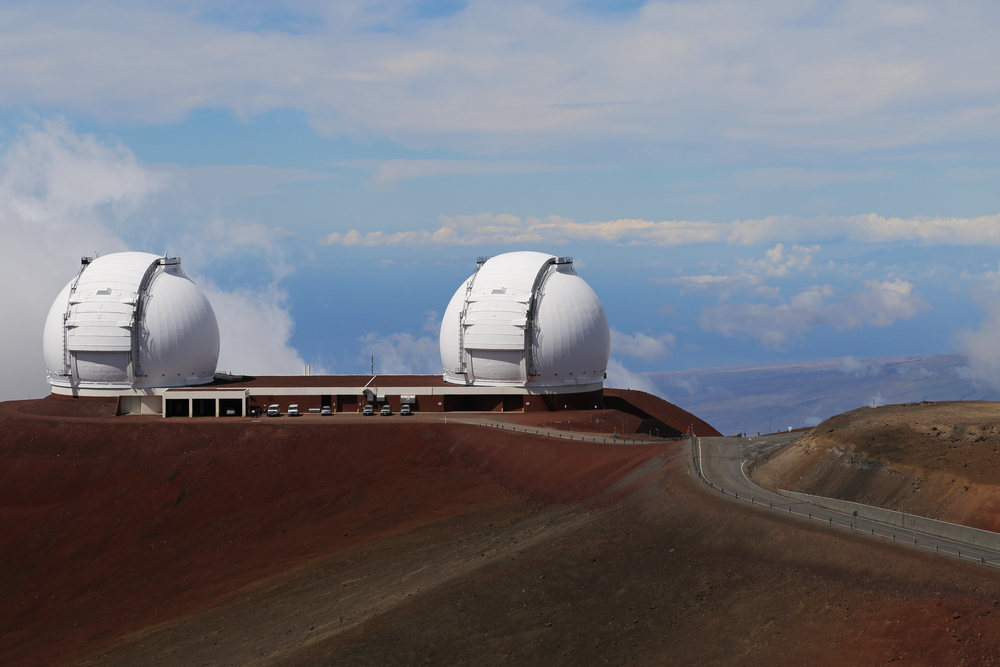
While scientists at the USGS’s Hawaiian Volcano Observatory (HVO) can identify and track these signals of volcanic instability, they are unable to predict when or where lava will flow until an eruption is imminent.
HVO has lately improved its capability of detecting early signs of unrest by upgrading its surveillance systems.
Many earthquakes, navigation systems, and tilt stations dot Mauna Loa’s flanks, allowing scientists to keep close tabs on it around the clock.
Is Mauna Loa a threat to the people of Hawaii?
Even though an eruption of the massive volcano Mauna Loa, which towers above the island, isn’t looming just yet, scientists tracking the island’s erratic geological activity believe that its lengthy period of dormancy is perhaps winding down.
Geologists have been keeping a close eye on it since early 2021, even though it hasn’t spewed since 1984.
More than 200 minor earthquakes were recorded by the Hawaii Volcano Observatory (HVO) beneath Mauna Loa.
According to the HVO, these and other signs of increased activity suggest an enhanced movement of magma through the volcano’s shallow storage system.
To put it another way, Mauna Loa is beginning to stir.
Which areas are most at risk if Mauna Loa erupts?
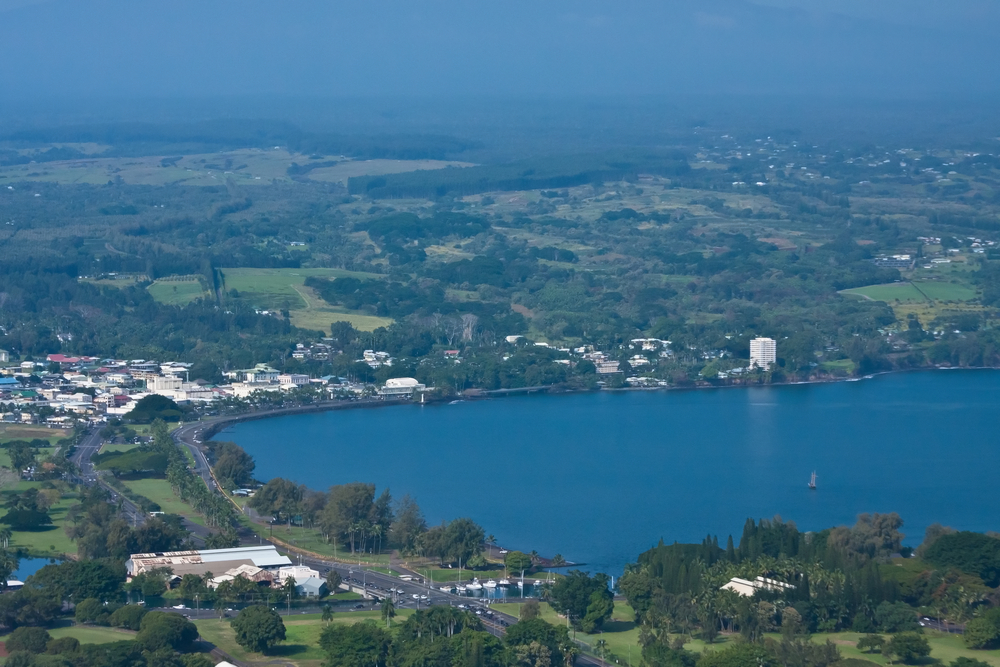
Researchers stress that an eruption isn’t a certainty, but the HVO urged people to “revisit personal eruption strategies” at this moment.
Lava flows might hit the coastline and inhabited places like Captain Cook within hours in regions on the island’s western coast, immediately south of the major tourism destination of Kailua-Kona.
In 1984, lava from Mauna Loa’s most recent eruption reached the periphery of Hilo, the island’s other major city and the site of the University of Hawaii, but the city had plenty of warning.
Are the eruptions of Mauna Loa and Kilauea similar?
Kilauea, on the other hand, erupts a smaller volume of lava per eruption than Mauna Loa, which results in smaller, slower-moving flows.
The 1984 eruption of Mauna Loa generated enough lava in twenty minutes as Kilauea releases in a day (at Kilauea’s current eruption pace).
Mauna Loa’s southwest flank has steeper slopes than much of Kilauea’s north and south flanks combined. Mauna Loa lava flows advance more quickly due to the steep slopes of the volcano.
The “a’a” type of lava and tube-fed pahoehoe flow produced by Mauna Loa and Kilauea volcanoes, respectively, can travel great distances beyond an active eruption.
How do people near Mauna Loa prepare for an eruption?
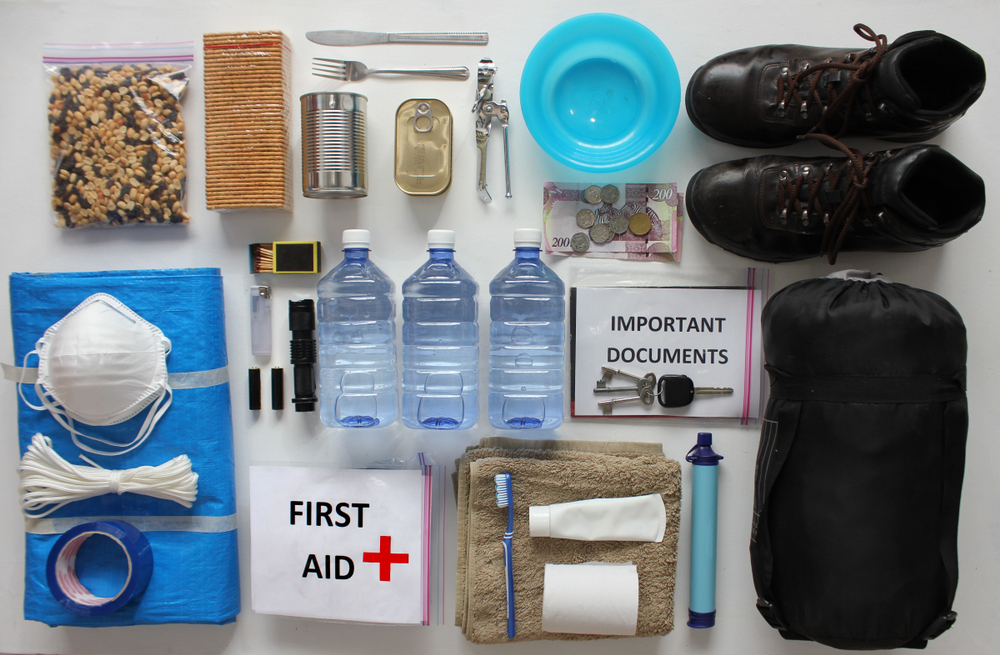
According to an announcement from the HVO, individuals are now packing “go” bags with essential goods in case they are forced to leave their homes due to a mandatory evacuation.
In addition to their birth certificate, titles, official documents, and pharmaceuticals, individuals might like to include other relevant paperwork.
Half of the Mauna Loa eruptions have remained restricted within the mountain’s remote summit area, proving that volcanoes do not always pose a danger to people or property on the ground below.
That said, lava has flowed into the water in a short period after many eruptions. It’s impossible to know what will happen in advance.
Why did Mauna Loa once lose its title as Largest Volcano?
According to geologists in 2013, M, a shield volcano in Hawaii, was probably not the world’s largest volcano as previously thought.
In their opinion, Tamu Massif, an extinct mountain on the seafloor east of Japan that seemed to be a shield volcano covering 100,000 square miles (nearly the size of Arizona) should take the prize for the largest shield volcano in the world.
However, a new study published in Nature Geoscience has reexamined Tamu Massif and found that it is not a shield volcano at all, meaning Mauna Loa has reclaimed the title.
Unexpectedly, marine geophysicist William Sager of the University of Houston is the lead author of both publications.
When did Mauna Loa reclaim its position as the world’s largest active volcano?
New research published in Nature Geoscience in 2019 called into question the long-held belief that Tamu Massif is the world’s largest single volcano.
Tamu Massif’s magnetic anomalies mimic those found at mid-ocean ridge plate boundaries, according to research that evaluated magnetic field data from the region.
Researchers at the University of Houston, led by senior author William Sager, concluded that the “spreading” of a mid-ocean ridge was responsible for creating the Tamu Massif.

Shield volcanoes are the most common type of volcano and are generated by stacks of fluid lava flows.
Is it safe to hike and camp on Mauna Loa?
Yes, however, the low visibility makes it dangerous and difficult to see the trail markers. A maximum of three consecutive nights per site is permitted.
To enjoy a successful trip to the summit of Mount Mauna Loa, hikers must be well-versed in wilderness and high-altitude expeditions, as well as physically fit.
How do you prepare for a stay on Mauna Loa?
The Pu’u ‘ula’ula can only accommodate 24 trekkers at a time (Red Hill). There are eight bunks with thin foam pads in the cabin.
At the summit lodge area, only 28 hikers are permitted. There are 12 bunks at the summit cabin, each with a mattress pad.
Water harvesting tanks are built into the cabins. When applying for a permit, check the current water levels. Before drinking any water, make sure it has been sterilized.
Please use the composting toilets that have been provided. Pit toilets are not for rubbish. The trailheads for the Mauna Loa Observatory and Mauna Loa Road have no water to drink.
It’s possible to go to both via one-lane paved roads. Transportation and public phone services are not available.
The trailhead of Kilauea’s Observatory may be reached in an hour using Mauna Loa Road from the Kilauea Visitor Center, whereas the Observatory trailhead can be reached in two hours via Saddle Road.
How hazardous is climbing Mauna Loa?
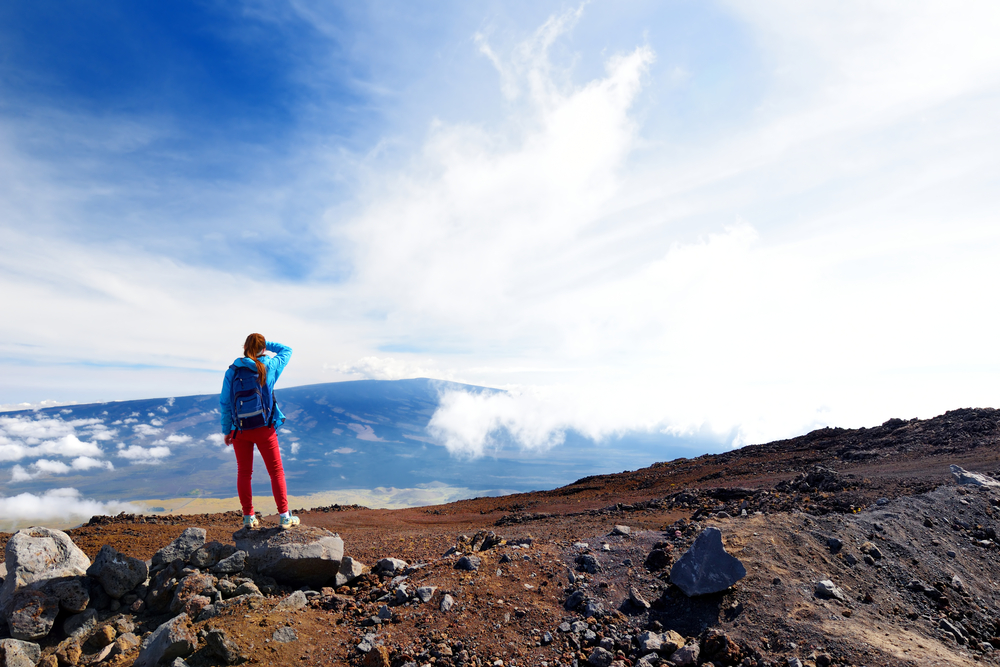
Weather-related risks
Winter storms, blizzards, heavy winds, and total darkness are all possibilities. Any time of year can bring with it the possibility of snow or torrential downpours.
Storms at high altitudes can occur at any time. All year long, nighttime temperatures are below freezing.
Risks to Health
Because of the high altitude and strenuous nature of the hike, you run the risk of getting altitude sickness. Climbing up will not help. Keep your energy levels in check and drink enough fluids.
Wrap your sleeping bag and extra clothing in plastic to keep them dry. Keep yourself warm and dry at all times; hypothermia can be fatal. Falling on lava that is sharp and glassy can cause serious injury.
To escape the BENDS, scuba divers should always expect to wait 24 hours before climbing Mauna Loa.
If you have been diving within the last 24 hours, trekking up Mauna Loa will put your health at risk.
Altitude sickness is a significant and sometimes fatal complication of hiking. To put it simply, it’s very high up there.
Do not attempt to hike on Mauna Loa if you are under the age of 16, pregnant, or suffer from a severe medical condition such as high blood pressure or lung and heart difficulties, among others.
What symptoms should you look out for when hiking Mauna Loa?
Watch for these signs of acute mountain sickness (AMS), high-altitude pneumonitis/edema (HAPE), and high altitude cerebellar edema (HACE).
If you’ve had AMS, HACE, or HAPE in the past, it’s best to check with your doctor before embarking on a hiking trip on Mauna Loa.
Altitude sickness can only be treated on Mauna Loa by being evacuated to a lower altitude, ideally to sea level. The person should be taken to the hospital if their symptoms don’t improve at sea level.
Are bonfires allowed while camping on Mauna Loa?
Hazards of Fire
Grass and brush are highly combustible in the regions that the Mauna Loa Road passes through, making them dangerous. The use of open fires is strictly forbidden.
How long does it take to climb Mauna Loa?
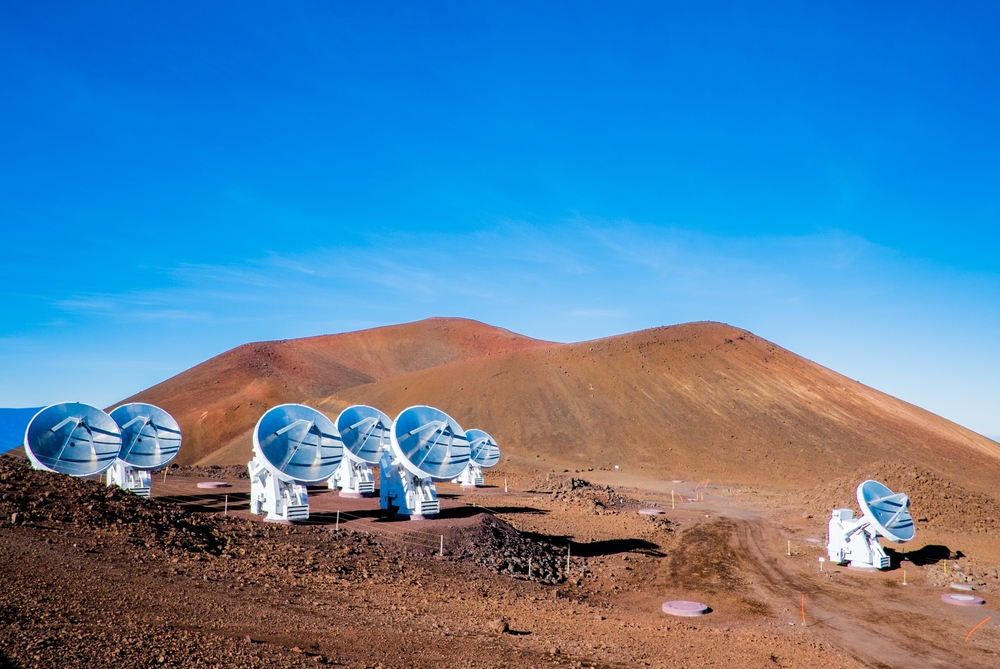
Mauna Loa Trail
The total round trip is 43.2 miles if you visit both the cabin and genuine summit, which normally takes 3–4 days to complete. Four is considered the ideal number.
At the Kilauea Visitor Center, where you can get the most up-to-date details about the cabins, water, and weather, you’ll also find out how many people are on the route at any given time.
Observatory Trail
The Observatory Trail is more difficult because of its steeper ascent, while the Mauna Loa Trail is more gradual. On top of all that, it’s only 12.4 miles one way.
Although the trip may be completed in a single day, it is highly suggested that hikers remain overnight at the Summit Cabin.





